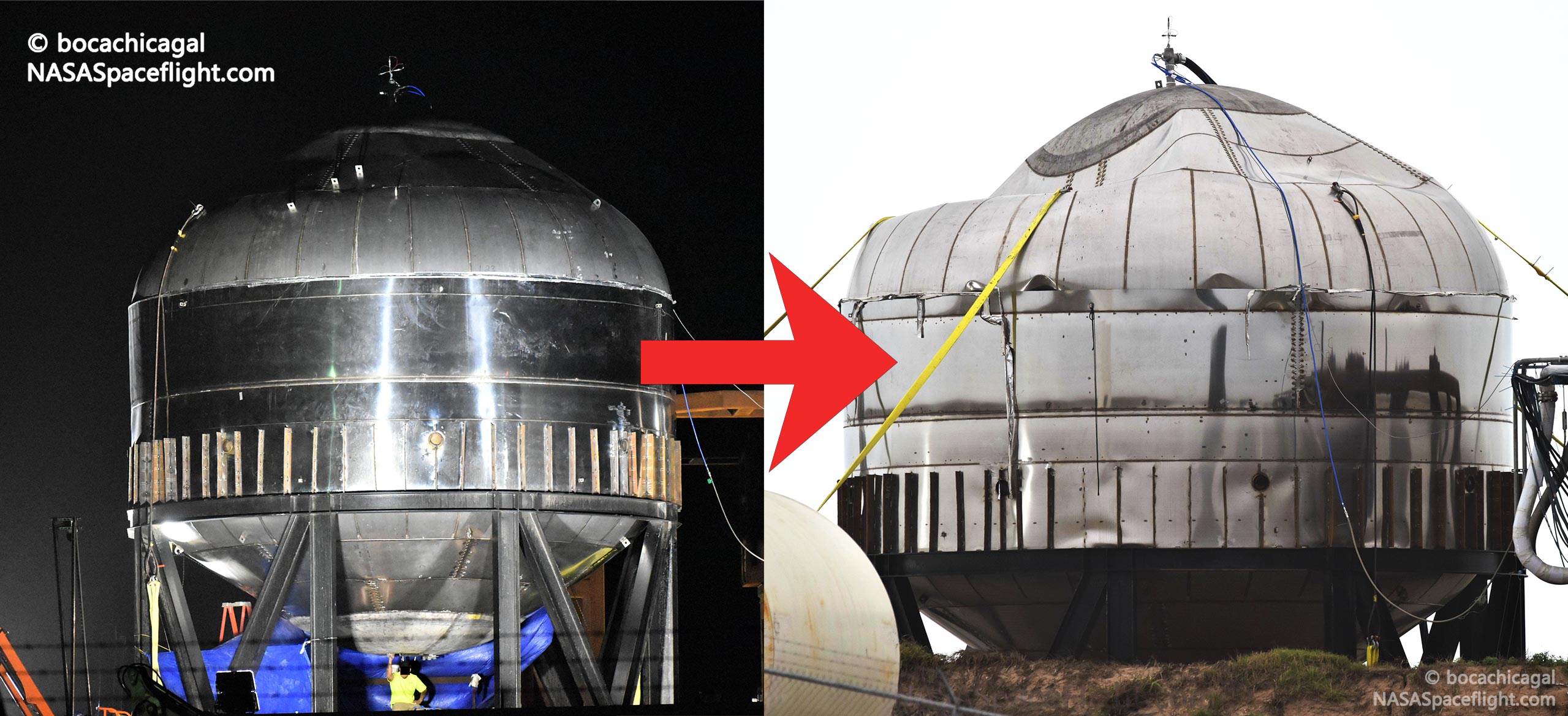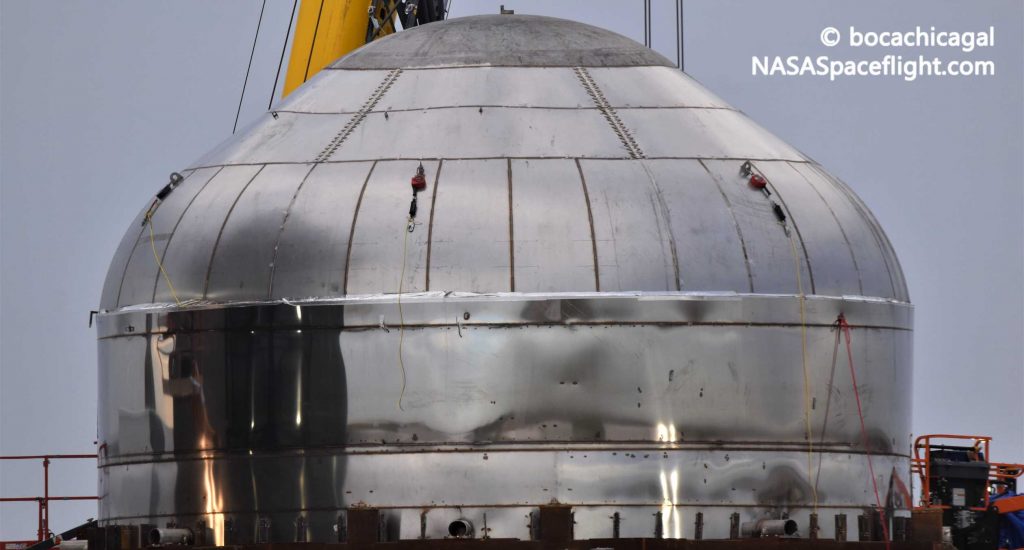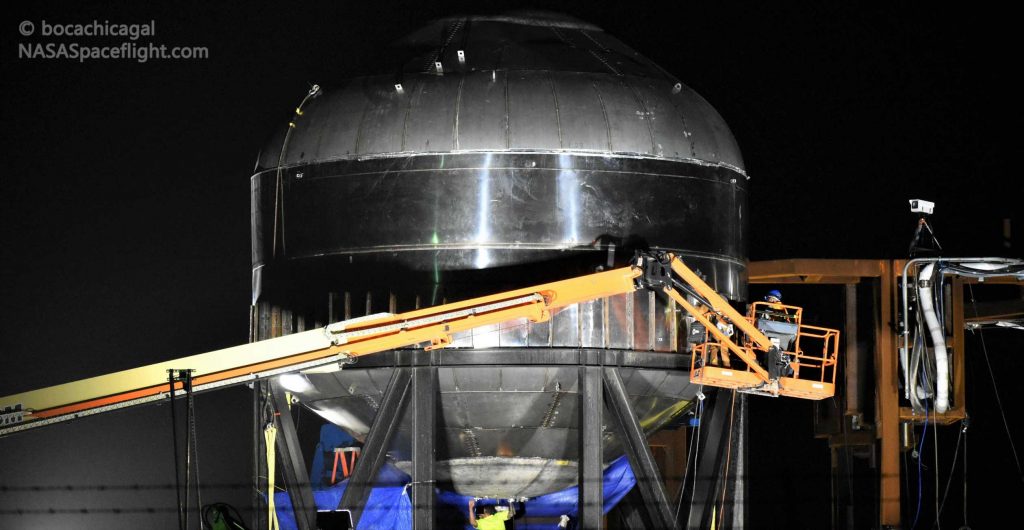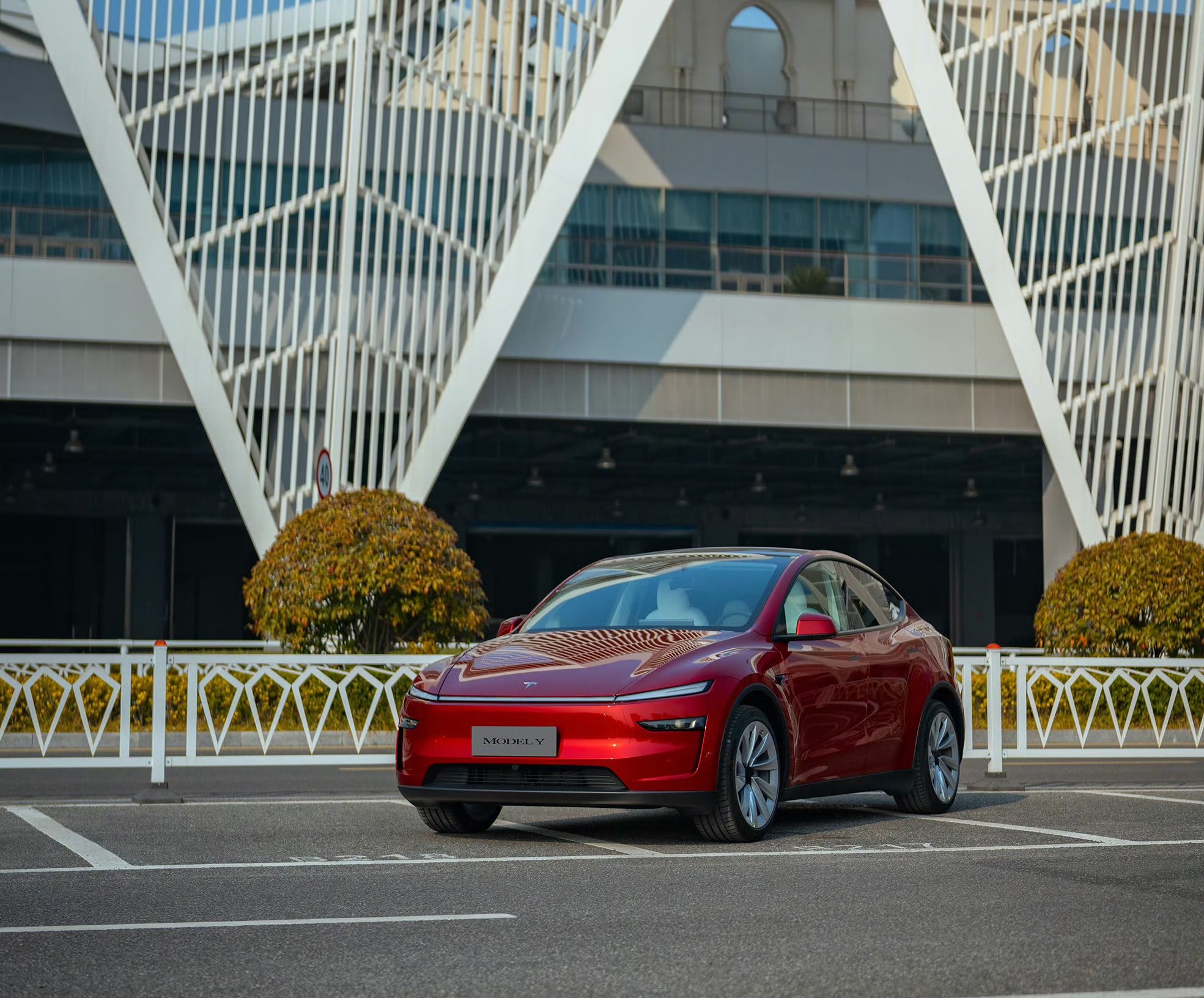

News
SpaceX just blew up a Starship tank on purpose and Elon Musk says the results are in
Before dawn on January 10th, SpaceX technicians and engineers intentionally blew up a miniature Starship tank in order to test recently-upgraded manufacturing and assembly methods, likely to be used to build the first Starships bound for flight tests and orbit.
SpaceX CEO Elon Musk quickly weighed in on Twitter later the same day, revealing some crucial details about the Starship tank test and effectively confirming that it was a success. While somewhat unintuitive, this is the second time SpaceX has intentionally destroyed largely completed Starship hardware in order to determine the limits of the company’s current methods of production and assembly.
Most notably, on November 20th, SpaceX is believed to have intentionally overpressurized the Starship Mk1 prototype in a very similar – albeit larger-scale – test, destroying the vehicle and sending its top tank dome flying hundreds of feet into the air. It’s generally believed that SpaceX (or perhaps even just Musk) decided that Starship Mk1 was not fit to fly, leading the company to switch gears and deem the prototype a “manufacturing pathfinder” rather than the first Starship to fly – which Musk had explicitly stated just a few months prior.
Bopper (Baby StarPopper) this morning after the overpressure event at SpaceX Boca Chica. ??@NASASpaceflight https://t.co/nCG7E9XtKM pic.twitter.com/PRTDQvvlRh— Mary (@BocaChicaGal) January 10, 2020
Dome to barrel weld made it to 7.1 bar, which is pretty good as ~6 bar is needed for orbital flight. With more precise parts & better welding conditions, we should reach ~8.5 bar, which is the 1.4 factor of safety needed for crewed flight.— Buff Mage (@elonmusk) January 10, 2020
Instead, Starship Mk1 suffered irreparable damage during its pressurization test and was rapidly scrapped in the weeks following, although several segments were thankfully salvaged – perhaps for use on future prototypes. Along those lines, it can arguably be said that the results from the mini Starship tank’s Jan. 10 pop test have paved the way for SpaceX to build the first truly flightworthy Starship prototypes – potentially all the way up to the first spaceworthy vehicles.
Hours after the test, Musk revealed that the Starship test tank failed almost exactly where and how SpaceX expected it would, bursting when the weld joining the upper dome and tank wall failed. Critically, the tank reached a maximum sustained pressure of 7.1 bar (103 psi), some 18% over the operating pressure (6 bar/87 psi) Musk says Starship prototypes will need to be declared fully capable of orbital test flights. In other words, given the tank’s size, it survived an incredible ~20,000 metric tons (45 million lbf) of force spread out over its surface area, equivalent to about 20% the weight of an entire US Navy aircraft carrier.
Musk also revealed that SpaceX will require Starships to survive a minimum of 140% of that operating pressure before the company will allow the spacecraft to launch humans.
Some have less than generously taken to smugly noting that several modern spaceflight and engineering standards require that launch vehicle tankage be rated to survive no less than 125% of their operating pressure, while this test tank would be rated for less than 118% under identical conditions. However, this ignores several significant points of interest. First and foremost, the Starship test tank intentionally destroyed on January 10th was assembled from almost nothing – going from first weld to a completed pressurization test – in less than three weeks (20 days).
Second, all visible welding and assembly work was performed outside in the South Texas elements with only a minor degree of protection from the coastal winds and environment. Although some obvious tweaks were made to the specific methods used to assembly the prototype tank, it also appears that most of the welding was done by hand. For the most part, in other words, the methods used to build this improved test article were largely unchanged compared to Starship Mk1, which is believed to have failed around 3-5 bar (40-75 psi).
Additionally, it appears that almost all aspects of this test tank have smaller structural margins, meaning that the tank walls and domes are likely using steel stock that is substantially thinner than what was used on Starship Mk1. Nevertheless, thanks to the addition of continuous (single-weld) steel rings, a tweaked dome layout, and slightly refined welding, this test tank has performed anywhere from 20% to 200+% better than Starship Mk1 – again, all while coming together from scratch in a period of less than three weeks.

As Musk notes, with relatively minor improvements to welding conditions and the manufacturing precision of Starship rings and domes, SpaceX can likely ensure that Starships (and thus Super Heavy boosters) will be able to survive pressures greater than 8.5 bar (125 psi), thus guaranteeing a safety margin of at least 40%. Even a minor improvement of ~6% would give vehicles a safety margin of 125%, enough – in the eyes of engineering standards committees – to reasonably certify Starships for orbital test flights.


All things considered, it’s safe to assume that SpaceX is going to begin building and assembling Starship SN01 (formerly Mk3) hardware almost immediately. Given that this test tank took just 20 days to assemble, it’s safe to say that the upgraded prototype’s tank section could be completed in just a handful of weeks. Stay tuned for progress reports.
Check out Teslarati’s Marketplace! We offer Tesla accessories, including for the Tesla Cybertruck and Tesla Model 3.
Elon Musk
Tesla analysts believe Musk and Trump feud will pass
Tesla CEO Elon Musk and U.S. President Donald Trump’s feud shall pass, several bulls say.

Tesla analysts are breaking down the current feud between CEO Elon Musk and U.S. President Donald Trump, as the two continue to disagree on the “Big Beautiful Bill” and its impact on the country’s national debt.
Musk, who headed the Department of Government Efficiency (DOGE) under the Trump Administration, left his post in May. Soon thereafter, he and President Trump entered a very public and verbal disagreement, where things turned sour. They reconciled to an extent, and things seemed to be in the past.
However, the second disagreement between the two started on Monday, as Musk continued to push back on the “Big Beautiful Bill” that the Trump administration is attempting to sign into law. It would, by Musk’s estimation, increase spending and reverse the work DOGE did to trim the deficit.
Every member of Congress who campaigned on reducing government spending and then immediately voted for the biggest debt increase in history should hang their head in shame!
And they will lose their primary next year if it is the last thing I do on this Earth.
— Elon Musk (@elonmusk) June 30, 2025
President Trump has hinted that DOGE could be “the monster” that “eats Elon,” threatening to end the subsidies that SpaceX and Tesla receive. Musk has not been opposed to ending government subsidies for companies, including his own, as long as they are all abolished.
How Tesla could benefit from the ‘Big Beautiful Bill’ that axes EV subsidies
Despite this contentious back-and-forth between the two, analysts are sharing their opinions now, and a few of the more bullish Tesla observers are convinced that this feud will pass, Trump and Musk will resolve their differences as they have before, and things will return to normal.
ARK Invest’s Cathie Wood said this morning that the feud between Musk and Trump is another example of “this too shall pass:”
BREAKING: CATHIE WOOD SAYS — ELON AND TRUMP FEUD “WILL PASS” 👀 $TSLA
She remains bullish ! pic.twitter.com/w5rW2gfCkx
— TheSonOfWalkley (@TheSonOfWalkley) July 1, 2025
Additionally, Wedbush’s Dan Ives, in a note to investors this morning, said that the situation “will settle:”
“We believe this situation will settle and at the end of the day Musk needs Trump and Trump needs Musk given the AI Arms Race going on between the US and China. The jabs between Musk and Trump will continue as the Budget rolls through Congress but Tesla investors want Musk to focus on driving Tesla and stop this political angle…which has turned into a life of its own in a roller coaster ride since the November elections.”
Tesla shares are down about 5 percent at 3:10 p.m. on the East Coast.
Elon Musk
Tesla scrambles after Musk sidekick exit, CEO takes over sales
Tesla CEO Elon Musk is reportedly overseeing sales in North America and Europe, Bloomberg reports.

Tesla scrambled its executives around following the exit of CEO Elon Musk’s sidekick last week, Omead Afshar. Afshar was relieved of his duties as Head of Sales for both North America and Europe.
Bloomberg is reporting that Musk is now overseeing both regions for sales, according to sources familiar with the matter. Afshar left the company last week, likely due to slow sales in both markets, ending a seven-year term with the electric automaker.
Tesla’s Omead Afshar, known as Elon Musk’s right-hand man, leaves company: reports
Afshar was promoted to the role late last year as Musk was becoming more involved in the road to the White House with President Donald Trump.
Afshar, whose LinkedIn account stated he was working within the “Office of the CEO,” was known as Musk’s right-hand man for years.
Additionally, Tom Zhu, currently the Senior Vice President of Automotive at Tesla, will oversee sales in Asia, according to the report.
It is a scramble by Tesla to get the company’s proven executives over the pain points the automaker has found halfway through the year. Sales are looking to be close to the 1.8 million vehicles the company delivered in both of the past two years.
Tesla is pivoting to pay more attention to the struggling automotive sales that it has felt over the past six months. Although it is still performing well and is the best-selling EV maker by a long way, it is struggling to find growth despite redesigning its vehicles and launching new tech and improvements within them.
The company is also looking to focus more on its deployment of autonomous tech, especially as it recently launched its Robotaxi platform in Austin just over a week ago.
However, while this is the long-term catalyst for Tesla, sales still need some work, and it appears the company’s strategy is to put its biggest guns on its biggest problems.
News
Tesla upgrades Model 3 and Model Y in China, hikes price for long-range sedan
Tesla’s long-range Model 3 now comes with a higher CLTC-rated range of 753 km (468 miles).

Tesla has rolled out a series of quiet upgrades to its Model 3 and Model Y in China, enhancing range and performance for long-range variants. The updates come with a price hike for the Model 3 Long Range All-Wheel Drive, which now costs RMB 285,500 (about $39,300), up RMB 10,000 ($1,400) from the previous price.
Model 3 gets acceleration boost, extended range
Tesla’s long-range Model 3 now comes with a higher CLTC-rated range of 753 km (468 miles), up from 713 km (443 miles), and a faster 0–100 km/h acceleration time of 3.8 seconds, down from 4.4 seconds. These changes suggest that Tesla has bundled the previously optional Acceleration Boost for the Model 3, once priced at RMB 14,100 ($1,968), as a standard feature.
Delivery wait times for the long-range Model 3 have also been shortened, from 3–5 weeks to just 1–3 weeks, as per CNEV Post. No changes were made to the entry-level RWD or Performance versions, which retain their RMB 235,500 and RMB 339,500 price points, respectively. Wait times for those trims also remain at 1–3 weeks and 8–10 weeks.
Model Y range increases, pricing holds steady
The Model Y Long Range has also seen its CLTC-rated range increase from 719 km (447 miles) to 750 km (466 miles), though its price remains unchanged at RMB 313,500 ($43,759). The model maintains a 0–100 km/h time of 4.3 seconds.
Tesla also updated delivery times for the Model Y lineup. The Long Range variant now shows a wait time of 1–3 weeks, an improvement from the previous 3–5 weeks. The entry-level RWD version maintained its starting price of RMB 263,500, though its delivery window is now shorter at 2–4 weeks.
Tesla continues to offer several purchase incentives in China, including an RMB 8,000 discount for select paint options, an RMB 8,000 insurance subsidy, and five years of interest-free financing for eligible variants.
-

 Elon Musk1 day ago
Elon Musk1 day agoTesla investors will be shocked by Jim Cramer’s latest assessment
-

 News6 days ago
News6 days agoTesla Robotaxi’s biggest challenge seems to be this one thing
-

 News2 weeks ago
News2 weeks agoTesla’s Grok integration will be more realistic with this cool feature
-

 Elon Musk2 weeks ago
Elon Musk2 weeks agoElon Musk slams Bloomberg’s shocking xAI cash burn claims
-

 News2 weeks ago
News2 weeks agoTesla China roars back with highest vehicle registrations this Q2 so far
-

 News2 weeks ago
News2 weeks agoTexas lawmakers urge Tesla to delay Austin robotaxi launch to September
-

 News2 weeks ago
News2 weeks agoTesla dominates Cars.com’s Made in America Index with clean sweep
-

 Elon Musk1 week ago
Elon Musk1 week agoFirst Look at Tesla’s Robotaxi App: features, design, and more














